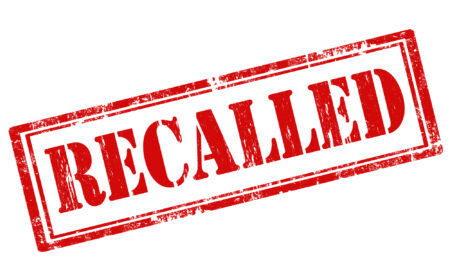“94% of Fortune 1000 companies are seeing supply chain disruptions from COVID-19…Supply chains lack global resilience and are breaking down in the face of multi-country disruptions…That [long-term supply chain] capability should be technology-led, leveraging platforms that support applied analytics, artificial intelligence and machine learning. It should also ensure end-to-end transparency across the supply chain” (Accenture). Indeed, the pandemic has affected supply chains across multiple industries in dramatic and difficult ways. In the healthcare sphere, supply chain experts understand the importance of an automated, optimized, and efficient healthcare supply chain for improving the bottom line for hospitals because it ensures a lean inventory, accurate charge capture, and reduction in waste. Supply chain costs are one of the top expenses for hospitals, and particularly impact institutions with a high Case Mix Index, such as academic medical centers with busy interventional departments. These departments (cath labs, interventional radiology, EP, OR, GI/endoscopy) are areas where the majority of supply expenses occur, and where consumable supplies and implants represent an essential part of the patient care process and cost.
The COVID-19 pandemic has made it abundantly clear that better supply chain visibility and predictability help hospitals manage their operations and resources effectively because they enable them to forecast, plan, and adjust these resources depending on the situation. Smart Key Performance Indicators (KPIs) – such as those tracking expiring or unused inventory as a percentage of total on-hand inventory, opened but not used inventory, and consumed versus purchased inventory – provide hospitals with the data analytics needed to achieve inventory optimization and alignment with clinical needs, while also preventing waste and unnecessary spending. KPIs keep supply chain, IT, and finance informed and accountable, and help guide improvement opportunities, monitor performance, and measure savings.
Even more importantly, automated supply chain and data capture technologies improve patient care, safety, and outcomes.
There are tens of thousands of medical products needed for hundreds of procedures – for very different patients with unique needs. As a result, there are a tremendous number of medical devices and supplies on the market, many of which are stocked (some of them as part of a consignment program) at hospitals to perform these procedures. However, these hospital supplies and items are often not tracked inside facilities nor are even traceable to specific patients, despite limited shelf life, possible recalls, or being managed directly by vendors. Without accurate information about which items are needed for patient care, whether they’re in stock, where they’re located in the hospital, and whether or not they’re usable (i.e., not expired or recalled), there are tremendous inefficiencies and risks to patients.
Five Ways to Improve Patient Safety and Care
- A strong supply chain ensures that the right products are available and on hand for every patient procedure, including clinician preference items. Supply chain disruptions caused by the pandemic have showed us just how important this is for patient care. A healthy supply chain avoids stock-outs and prevents hoarding. Having the desired products on hand also means that clinical staff aren’t running around the facility searching for products during a procedure when they should be attending to the patient. Less coming and going in and out of the procedure room also means a lower chance of infection for the patient.
- Effective and easy-to-use data capture solutions at the point of care mean that clinical staff are freed from the cumbersome and error-prone manual entry of products during a procedure. And accurate clinical documentation means, in turn, that the supply chain receives accurate data about product quantities and availability – a critically important demand signal that enables hospitals to avoid stock-outs by knowing when to reorder certain products, thereby ensuring that par levels always meet the needs of clinicians. Without correct and precise data capture at the point of care, patients are ultimately placed at risk. Accurate data capture also guarantees precise electronic health records and billing, which are an essential element of proper patient care.
- When hospitals have automated supply chain and data capture technologies in place, recalled items can also be tracked to individual patients within seconds. According to the FDA, there were more than 700 medical devices recalled over the past year (Class I: 151; Class II: 500; Class III: 53). Without such technologies, hospitals waste a tremendous amount of time and resources trying to identify all affected patient cases (and not always succeeding) because the data is simply not available at their fingertips.
- Tracking and data capture solutions safeguard against expiring or expired items ever being placed in patients, as well as promise that such items will be proactively dealt with so that they don’t linger on the shelves (e.g., used in priority before reaching expiration). When the supply chain is automated and able to track and document a product’s lot/serial number and expiration date, among other pedigree details, this risk to patients is eliminated and the inventory is kept healthy and in good standing.
- Finally, a functioning supply chain ensures that the FDA’s Unique Device Identifier (UDI) regulation for medical devices is satisfied by tracking and recording items through their UDI data. The UDI system provides a range of important benefits to patients and providers, such as allowing for the rapid identification of problem devices and provision of a standardized and clear way to document device usage in electronic health records and clinical information systems. As stated in HealthCare Business News magazine, “a best-in-class practice supply chain would need to capture the complete UDI – DI [Device Identifier] +PI [Production Identifier] using an inventory management-IM system.”
The need for medical device tracking is not theoretical: according to the International Consortium of Investigative Journalists, between 2008 and 2018 more than 5.4 million “adverse event” reports (considered to be a vastly underreported number) had been sent to the FDA, describing cases where a device was “suspected to have caused or contributed to a serious injury or death, or has experienced a malfunction that would likely lead to harm if it were to recur. Medical devices that broke, misfired, corroded, ruptured or otherwise malfunctioned after implantation or use — despite assurances by regulators, the industry and doctors that they were safe — were linked to more than 1.7 million injuries and nearly 83,000 deaths…”
How to Achieve a Successful, Automated Supply Chain
At the heart of a successful supply chain is a unified approach involving smart KPIs, automated UDI data capture solutions – such as RAIN RFID-based technologies – and Cloud analytics that provide real-time information about a product’s location, availability, pedigree, status, and so on. RAIN RFID is an incredibly powerful tool for achieving supply chain transparency and inventory optimization through the generation of essential data. And information truly IS power – the power to analyze and decide, the power to make changes and adapt, the power to succeed and excel.
We have seen first-hand the great extent to which hospitals are empowered through the real-time collection of UDI data using RAIN RFID technology, which is then analyzed and turned into actionable information with the power of Cloud computing. Manufacturers and hospitals can engage this UDI data to provide meticulous tracking of medical devices from deep within the manufacturer’s supply chain all the way to the point of care. The UDI data on an RFID tag enables users to find expiring and recalled products instantly, and to track devices to the hospital’s clinical, billing, and ERP systems, as well as electronic health records.
With advanced supply chain and data capture systems in place, hospitals are able to generate the information needed to achieve full visibility, accountability, and control of their clinical inventory, which in turn leads to streamlined operations, reduced waste, automated procure-to-pay processes, accurate billing, precise clinical documentation, and – most importantly – greater patient safety.





